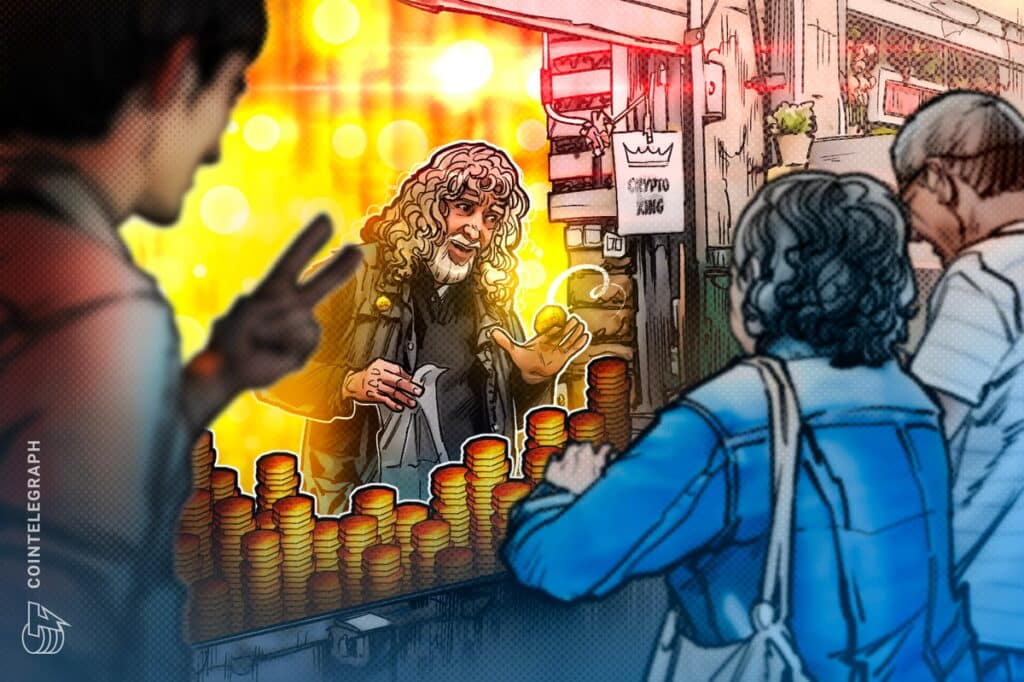What are supply and demand zones, and how do we use them in crypto trading?

Identifying supply and demand zones is an important part of technical analysis that helps traders optimize their operations. These zones are areas of consolidation that can occur before a significant upward or downward price movement.
Supply and demand zones can indicate a market reversal or trend continuation, and crypto traders use them when trying to profit from their crypto trading strategy. This article explains what supply and demand zones are in crypto trading, the types of supply and demand zones and how crypto traders can find these technical indicators.
What is supply and demand in crypto trading?
Supply and demand affect cryptocurrency prices. In a trade, supply is the number and activity of sellers and demand is the number and activity of buyers.
An excess of buyers usually leads to inflation, while an excess of sellers tends to push prices down. Supply and Demand Cryptocurrency trading strategies aim to take advantage of periods of excess supply or excess demand. Cryptocurrency traders want to buy when prices are low (oversupply) and sell when prices are high (overdemand).
What are supply and demand zones?
A supply zone is where the supply of cryptocurrency exceeds the demand; There is an oversupply; The price is decreasing; And the price chart shows a downward trend. On the other hand, the demand zone is where the demand for cryptocurrency exceeds the supply. Demand is high; The price is increasing; And the price chart shows progress.
In the crypto business, crypto whales or institutional investors often lead to high activity. These zones are resistance levels that confirm the trend. They aren't as easy to spot as rapid dips or price spikes, but there are patterns to look for. The following sections go into more detail on how to accurately identify supply and demand zones.
Impulsive waves
An Impulse Wave, represented by large green or red candles on a price chart used for technical analysis, can indicate supply and demand zones. A bullish wave (high demand) will see large green bullish candles. A downward push wave (higher supply) will see larger red descending candles.
A pressure wave may leave the market in a supply or demand zone and the imbalance of buy and sell orders may be the beginning of a new trend.
Movement in the supply zone
A supply zone indicated by large red descending candles indicates a downtrend, which may be a retracement or downtrend from a previous uptrend. As the recession continues, the price will drop. Traders can try to profit from “short term” in this market.
Movement in the area of interest
A zone of interest, defined by large green ascending candles, indicates an upward trend, which may lead to an upward reversal or a continuation of the trend again. As it grows, the value of the crypto increases, and traders can take a “long” position in the cryptocurrency.
Types of supply and demand zones
There are important differences between bearish or bullish reversals and continuations of existing trends that have implications for investors. Chart designs can show these different supply and demand zones.
Reversal patterns
Reversal patterns show when prices leave an uptrend and enter a downtrend or vice versa.
Drop Baseline (Bully)
A price moves down, then stays around that price for a while, creating a base structure before rallying up (high demand).
Rally Base Drop (Bear)
A price moves up, then forms a base, before going down (high supply).
Next styles
Trend patterns show when a price tries to break out of a pattern and form a base, but the current trend continues. These are weaker patterns with less momentum than reversal patterns and are usually less favorable for investors.
Drop a drop of foundation
The price drops, stops the downtrend to form a base, and resumes the strong downtrend.
rally
The price rises and stops the upward trend, forming a base, but the strong upward trend continues.

How to find supply and demand zones
Market fluctuations, or imbalances between supply and demand, create supply and demand zones. Large candles, also known as breakout price candles or extended range candles (ERCs), are a clear sign of market volatility. These candles usually have long bodies with small wicks. Two types of ERCs indicating demand and supply zones:
Green ERCs: Strong market demand and rising prices (Demand Zone) Red ERCs: Strong market supply and falling prices (Supply Zone).
Supply zones are indicated by large red descending candles (ERCs) with short wicks on the price chart. A strong supply zone may see a downtrend pause before the trend resumes, with several large candles appearing. The interest zone sees the same trend, but upwards, with large red ascending candles.
Support and resistance levels
Experienced cryptocurrency traders may look for a number of technical analysis indicators regarding changes in price and supply and demand, as well as supply and demand zones.
Pivot points, or resistance and support levels, are one such indicator. Support is where price stops in a downtrend due to increased demand. The resistance level is where the upward price trend reverses and the cryptocurrency should be sold. Another indicator, Fibonacci levels, helps identify turning points in supply and demand zones.
How crypto traders use supply and demand zones
Effective use of supply and demand zones requires a deep understanding of trading strategies and technical analysis knowledge. As cryptocurrency traders build their knowledge, they can identify supply and demand zones, mark them on the price chart, and find support, resistance, and Fibonacci levels.
Knowledgeable traders follow a strategy that suits their risk exposure. A range-trading strategy may involve taking long or short positions. A breakout strategy sees a trader looking to take positions in favorable conditions, hoping to buy when a long-term uptrend begins.

Supply and demand risks cryptocurrency trading strategies
Trading in supply and demand zones entails certain risks in addition to the usual crypto trading and investment pitfalls. They include:
False breaking
Price can break through a supply or demand zone and suddenly change direction. Such a situation can often be caused by market manipulation or low trading volume.
News and market sentiment
Supply and demand zone trading strategies use technical analysis to make decisions and ignore fundamental analysis. News of an economic or market event and anything that suddenly changes market sentiment renders analysis of supply and demand zones useless.
Dependence on supply and demand zones
Supply and demand zone trading is a valuable tool for investors, but it is best used in conjunction with other techniques such as technical analysis, fundamental analysis, and other strategies. At the very least, investors use other indicators to confirm market movements that appear to be occurring in supply and demand zones.
Risk management is the key to protecting against loss.
Crypto traders can try to profit by shorting the supply zone or taking a long position in the demand zone. Basically, when their demand is strong and the price is high, they sell, and when the supply is strong and the price is low, they use the price change to make a profit.
Risk management requires careful stop-loss orders in all trading situations. This includes maintaining both long and short positions, ensuring safe entry points for purchases in specific strategies, and minimizing potential losses in indirect trading.
Moreover, successful cryptocurrency trading requires a thorough understanding of how to accurately identify supply and demand zones, a thorough understanding of technical analysis, and an in-depth knowledge of the many strategies and indicators used by experienced traders.
This article does not contain investment advice or recommendations. Every investment and business activity involves risk, and readers should do their own research when making a decision.














